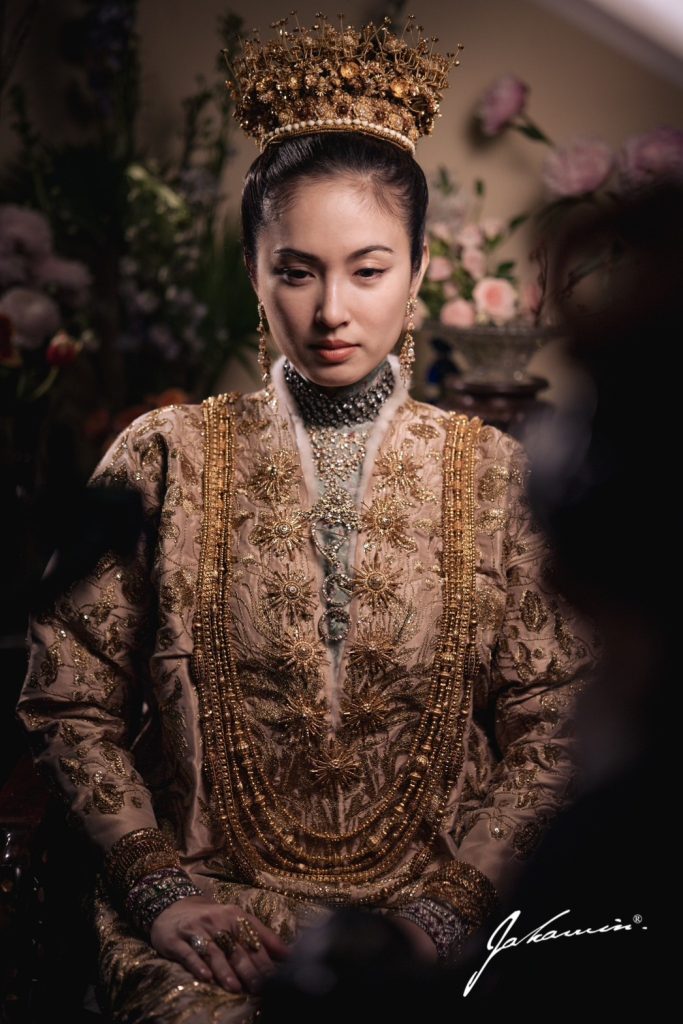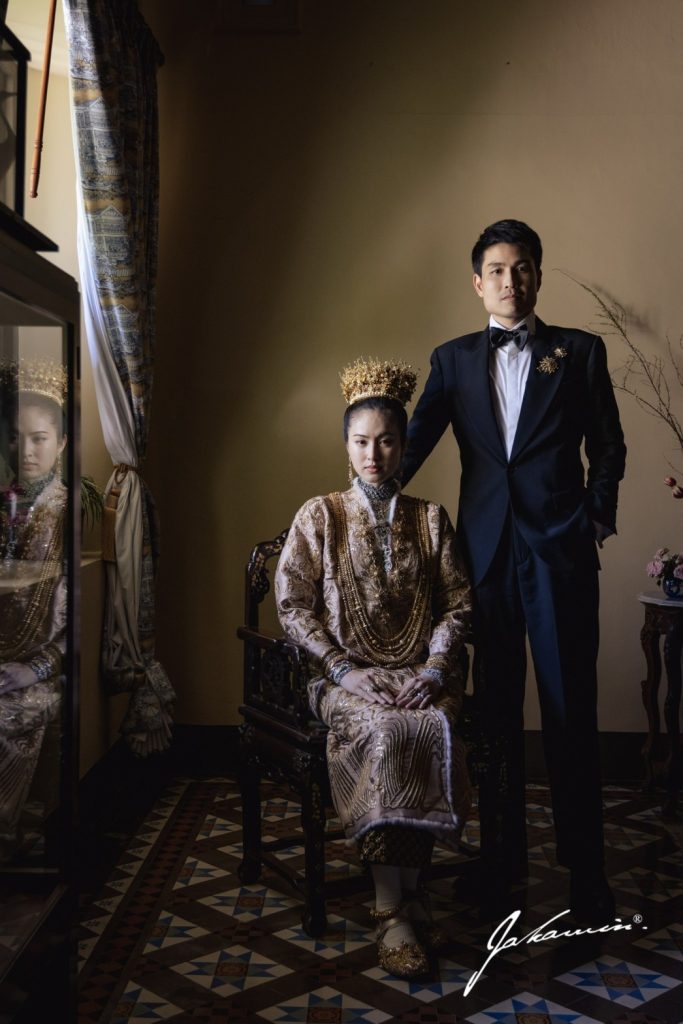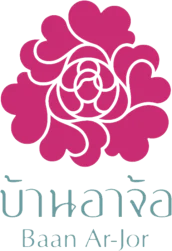The Baba traditional wedding ceremony of the “Punte” group (Chinese people in Phuket) has been passed down for many centuries, although some steps may have been simplified for convenience. However, every family tries to preserve the auspicious traditions to ensure good luck and a prosperous future for the bride, groom, and their families.
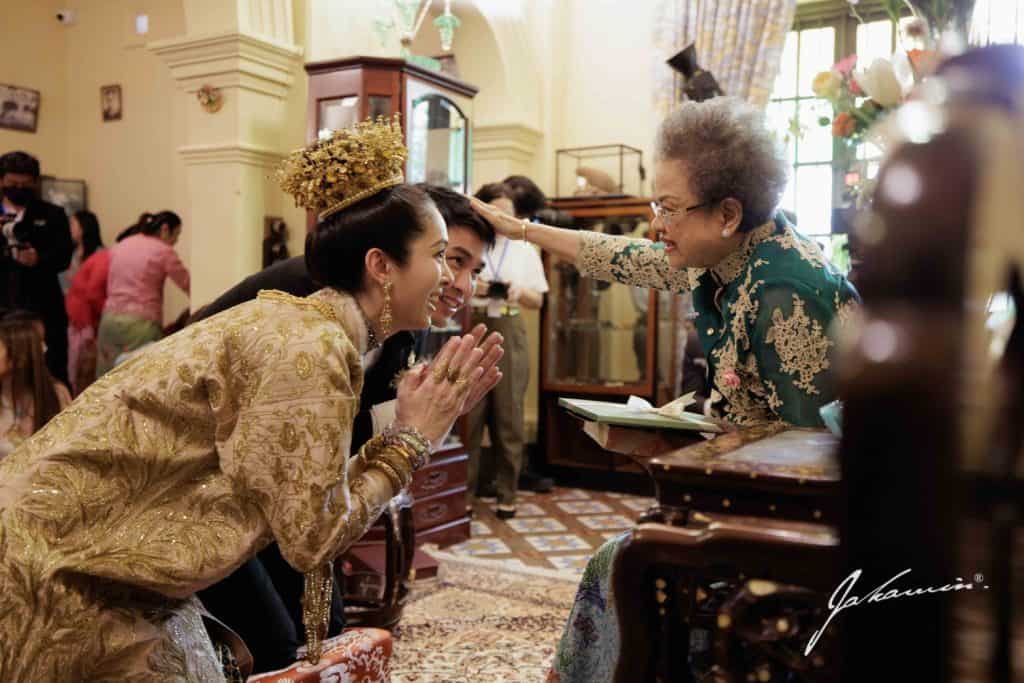
In the present day, the ceremony usually lasts about 2-3 days. It includes the “Wan Nom Sot” (fresh pastries) day, the wedding day itself, the “Phang Tae” ceremony (tea pouring ceremony), and the Chinese banquet. The last two activities are often combined into one day, starting with the morning ceremony and followed by a lunch or dinner reception.

On the “Wan Nom Sot” day, close relatives and friends gather at the bride’s house to help with housework, cooking, and preparing food and pastries in readiness for welcoming the groom on the wedding day.
In the past, the wedding preparations took place for 7 days and 7 nights as it was considered a grand event, symbolizing the union of two families into one. Many families saw it as an opportunity to increase their prosperity and business prospects. For example, if a family had a real estate business, they would prefer to hold the wedding in a house they were selling, and so on.
The wedding ceremony begins with the lighting of the “Luak Thad” (incense sticks) to inform all the deities, participants, and people in different parts of the village that the wedding ceremony is about to begin. The first act of worship is done to the ancestors, followed by paying respects to friends. The house is decorated beautifully, and the timing is considered very important. If the ceremony starts at 9 a.m., it is considered good luck. If it starts at 5 or 6 p.m., the event will be over by then. People wake up early and eagerly await the ceremony. The offering to the ancestors must include fruits, and the essential ones are pineapple, oranges, pomelos, and apples, as they symbolize happiness, wealth, and prosperity. The table for worshiping the ancestors is decorated with silver and gold paper, with the most beautiful and complete sugarcane on either side. Red cloth is hung in front of the table. The bride and groom must offer prayers and blessings to their ancestors, asking for a new family with abundant children and prosperous business.
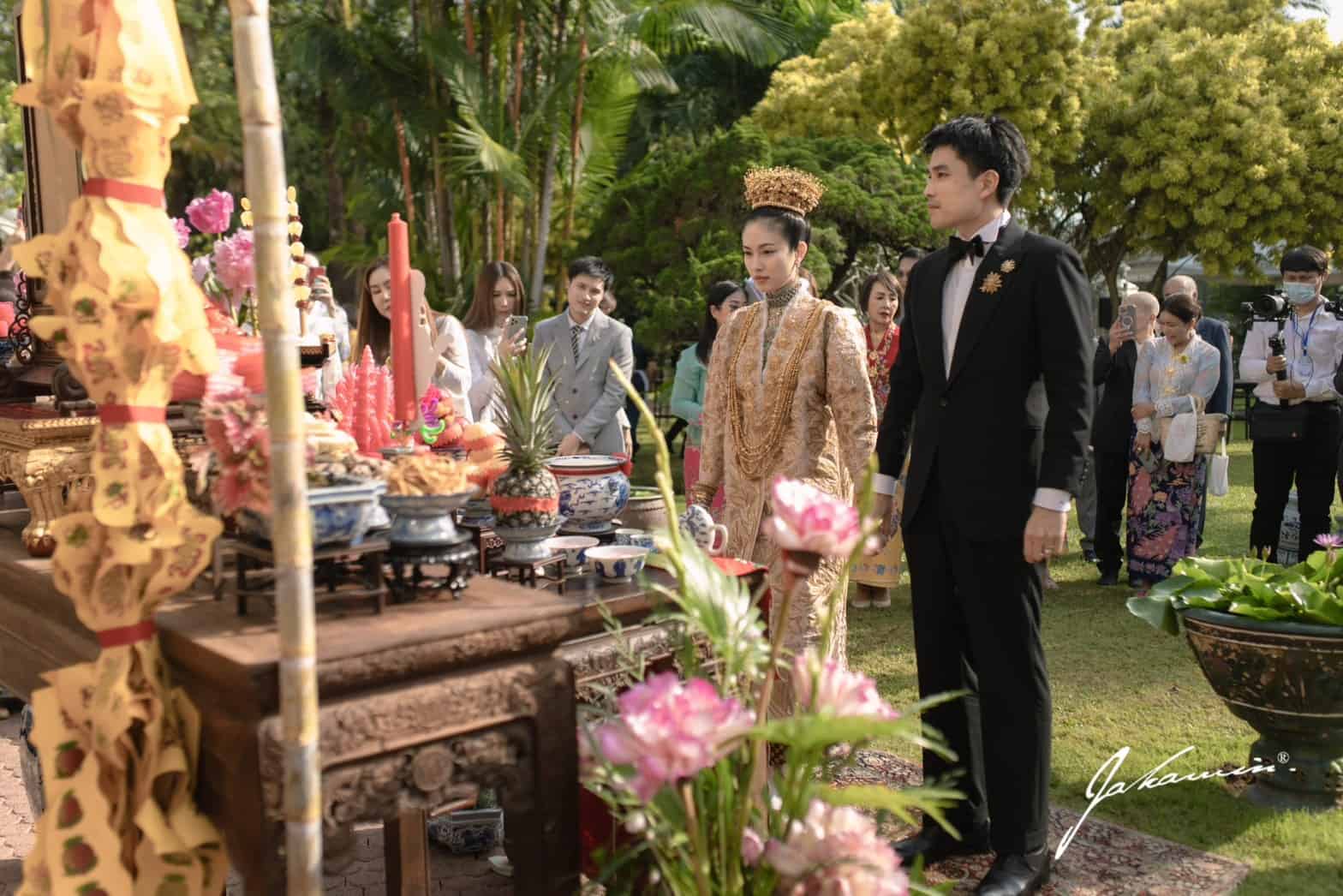
Once the worship at the front of the house is completed, the next step is to worship the ancestral altar inside the house. Normally, each house would already have a plaque or picture on the altar. This step is just as important as any other step because, for the Chinese, paying respects to ancestors is as important as honoring one’s parents. The groom must express that today he is building a new family and bringing the bride into his home, and he requests the ancestors to bless them with descendants who will be part of the family. As for the bride, she entrusts her remaining life to this new family and promises to fulfill her duties to ensure the continued prosperity of the new family. The essential pastry for this occasion is “Nom Angkoo” (red turtle-shaped pastry), which symbolizes cool shade, long-lasting happiness, and abundant years. There is also “Huad Koy” (similar to a flower bud), which signifies renowned prosperity, and auspicious pastries that are mostly red or pink in color.
The “Phang Teo” ceremony, which is the tea pouring ceremony, begins with the head of the family (chairperson) in the wedding ceremony. It can be a family member or an elder who is respected. They represent the groom’s family in seeking approval and engagement. It is followed by the order of age, starting with the bride’s siblings, as a sign of respect. Then, the groom’s side of the family is honored. The person performing the “Phang Teo” must be older than the groom. If they are unmarried, they usually don’t perform this task. If they can perform the task, they must receive a cloth from the bride. If they are divorced or widowed, they perform the task alone because they no longer belong to their previous family, and deceased family members are not included in this auspicious ceremony. Besides being a gift for the new family, the “Phang Teo” is said to be a show above the head. Each person holds a tray, and siblings (relatives) hold hands, and they place offerings in a box. If it is silver, it means they have fulfilled the requirements and are ready to start a new life. The ceremony concludes with the groom and bride kneeling and offering their thanks. They must kneel for no more than 2 hours. If they can manage that, it means they will be worth millions (of baht). It’s a very auspicious moment.
After the “Jorkong” ceremony, which is the photography session with the family, the bride comes out to greet the guests and receive envelopes or gifts from other guests. During this time, the groom does not participate in the ceremony. The photography session begins with the groom’s side of the family, followed by the bride’s side. This is because, after the wedding ceremony, the bride becomes a member of the groom’s family, and it is considered official that she has left her own family.
The following morning, everyone wakes up early, and the bride must wake up with or before the dawn. She rises quickly to prepare food and serve tea to her new parents. This is because she now has new parents.
The bride comes with great expectations that she will be able to produce many sons to help with the family business and contribute to the ongoing prosperity of the new family.
Bride’s Attire:
The wedding attire is a symbol of formality and often incorporates a blend of Chinese and Malay influences. The bride wears a fitted Cheongsam, a traditional Chinese dress, usually in white or light colors, with long sleeves and a high collar. It is paired with a matching sarong. Over this, she wears a Pa-Teh, a traditional Malay embroidered shawl or scarf, or a silk brocade shawl. The ensemble is adorned with elaborate gold jewelry, including a “Kosang,” a set of three large brooches worn on the outer garment. Additional jewelry such as necklaces, bracelets, rings, and embroidered shoes are worn to enhance the beauty. The outfit is designed by Meshmuseum and draws inspiration from poppy flowers. Each individual poppy was hand-stitched for months and sent to the bride just a few days before the wedding. The result is stunningly beautiful.

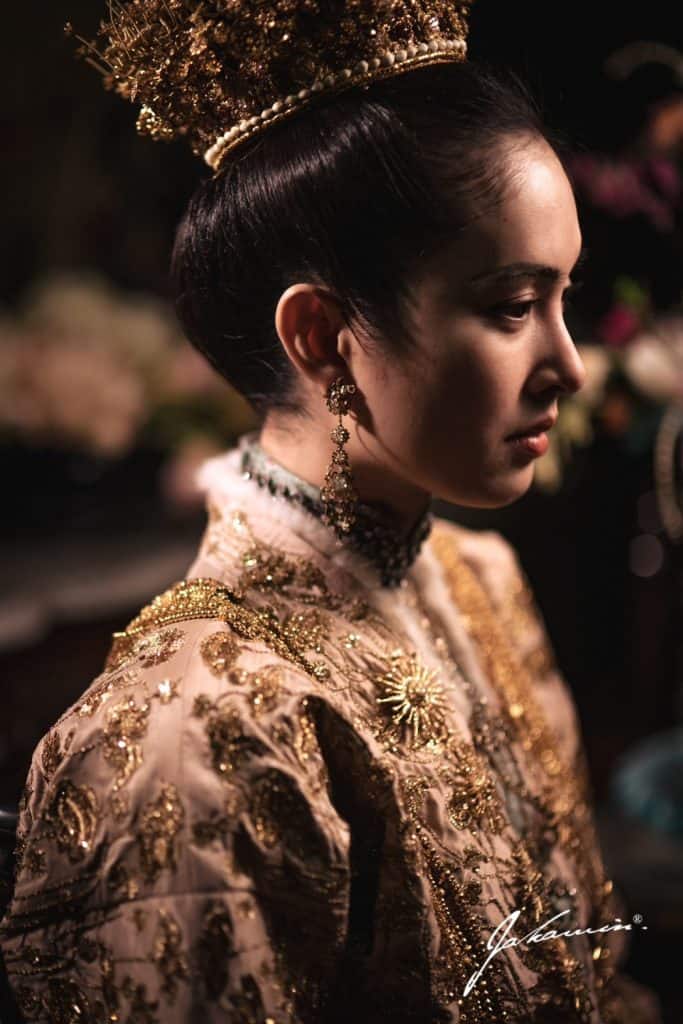
“Glaa Muay Chak Iboi” refers to a hairstyle that is unique to the bride in a Peranakan wedding. It involves combing the front hair neatly and raising it high, then tying the hair into a bun on top. The side hair is styled outward in a fan shape, called “Iboi” or “Pla Chon” (a fish’s fin). The bride also wears a golden crown over the bun.
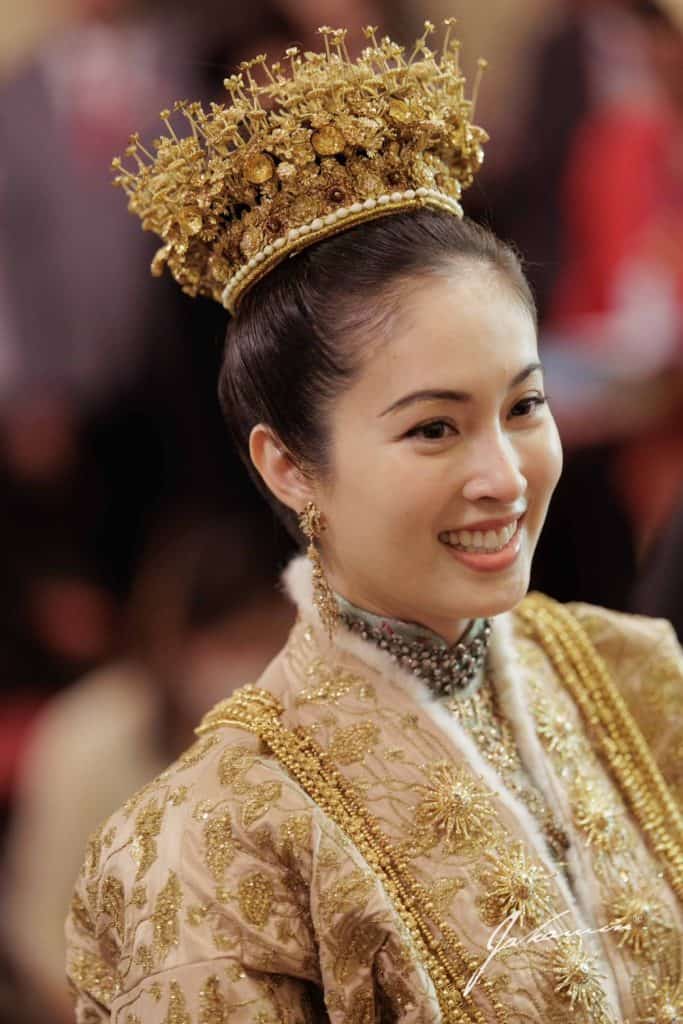
“The Wreath of Blooming Flowers” refers to the golden crown worn by the bride, which is adorned with swans on top. Chinese people believe that swans are majestic birds that often appear in cool and shady places with enchanting sounds. It symbolizes teaching the bride to have gentle words, take care of the family with coolness, and if the husband is absent, she can be the one who takes charge. The other elements on the crown are butterflies and flowers, representing the everlasting nature of marriage. The flowers on the crown can move, symbolizing the bride’s excitement to meet the groom on the wedding day.
The bride’s Babao attire is extremely romantic compared to traditional wedding attire from other cultures. In our Chinese-Thai fusion style, the attire combines elements from both cultures. The dress extends from the top of the head to the toes. In the morning, the bride gets dressed and adorned with gold, symbolizing auspiciousness and wealth. From head to toe, it takes hours to complete, but it looks powerful, even more so than when it’s finished. Walking while carrying several kilograms of real gold is quite a feat.

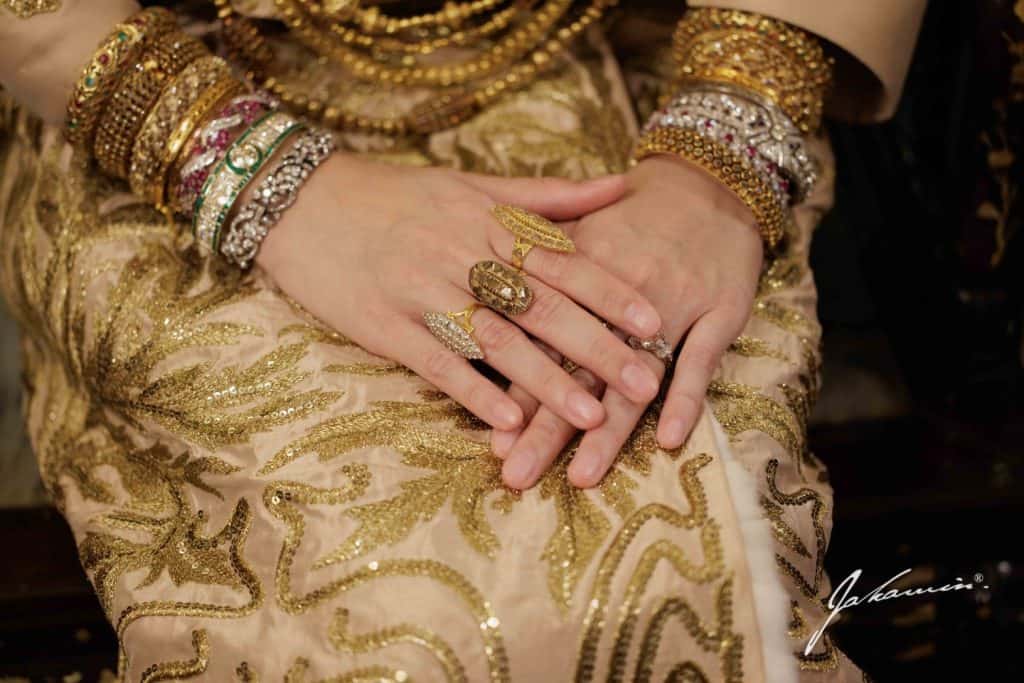
From the beginning (ancient times), the gold and diamond accessories worn by the bride not only signify the status of both families but also represent the future of the couple, which will be wealthy and prosperous. The two of them will work together to build a happy family and a thriving business. The flow of gold signifies the prosperity that will flow into the family. When the bride steps into the groom’s house with the box of personal belongings and the high-quality fabric given by her parents, it is said that she brings fortune to her husband’s family.
Gold jewelry is mostly newly made as a gift, one set for the bride, and some brides receive two sets—one from their own family and one from the groom’s family. The gold crown the bride wears is often a family heirloom passed down through generations. It can be from her own family or the groom’s family.
The bridal bouquet is designed to look sweet and delicate. The lilies and lilies of the valley are the original flowers from England that Catherine Middleton carried in her wedding to Prince William. The bouquet is simple, white and green. Normally, royal bouquets are not made to be this small and cute.
Lily of the Valley is a delicate white flower with a sweet fragrance, and its bell-shaped blossoms symbolize pure, innocent hearts, sweet trust, and the sound of joy. The bell-shaped blossoms are likened to happiness and tranquility. The English consider it a simple and beautiful flower that can be kept because it is common, and it is also grown in the gardens of Kensington Palace. Its uniqueness is that it only blooms during the spring. The specialness and meaning of this flower make it quite expensive. Only when Kate Middleton carried it did it gain global attention, and its price skyrocketed.
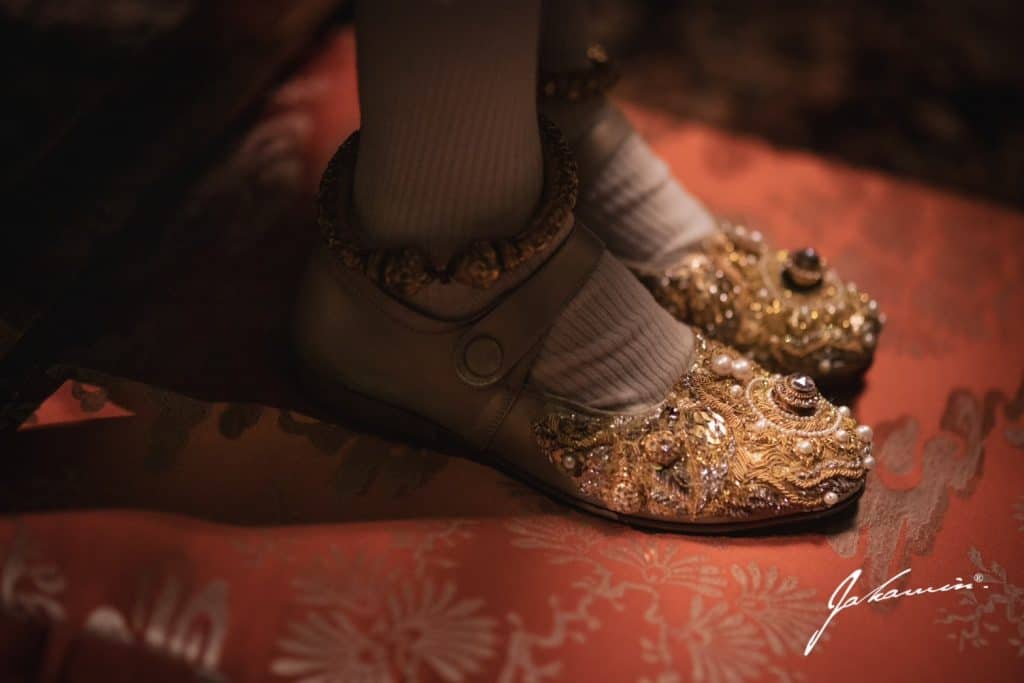

The bridal shoes may seem small, but it took more than three months to reach this day. They are made of gold-threaded metal fabric, tailored to fit the bride’s feet perfectly. The design is engraved on the fabric, with gold and silver embroidery, depicting a pair of swans, jasmine, and various colorful gemstones. The shoes are nearly the price of dark glasses. They are a precious part of the ancient jewelry collection, a unique piece from Ajarn Oof’s personal collection. The most special thing is the genuine Tahitian pearl, which is a symbol of the groom’s birthplace and the bride’s hometown.
